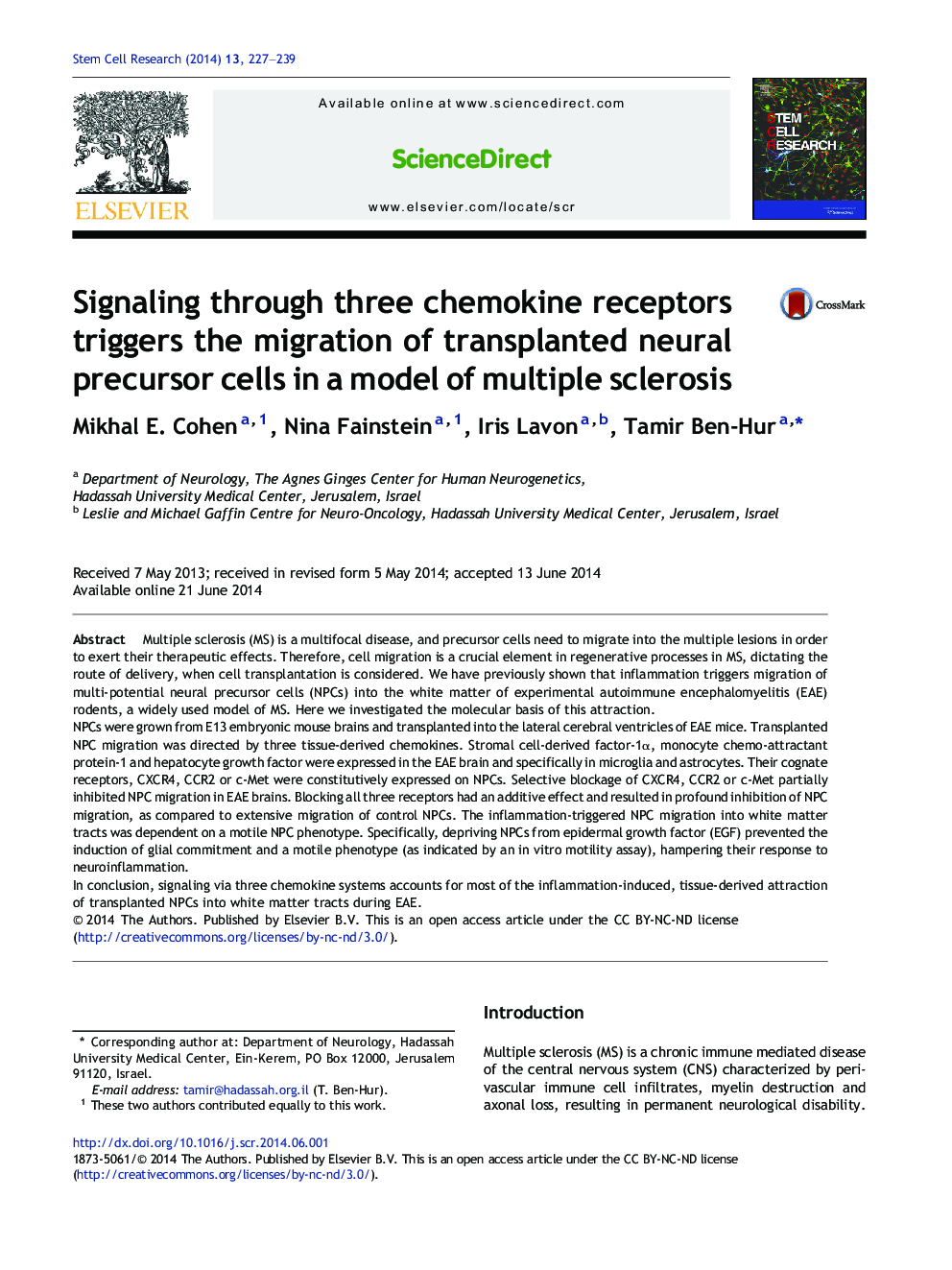| کد مقاله | کد نشریه | سال انتشار | مقاله انگلیسی | نسخه تمام متن |
|---|---|---|---|---|
| 2094164 | 1081992 | 2014 | 13 صفحه PDF | دانلود رایگان |

• Multiple sclerosis is a multifocal disease therefore cell migration is a crucial element for regenerative cell therapies.
• Inflammation triggers migration of multipotential neural precursor cells (NPCs) in EAE, an animal model of MS. Here we investigated the molecular basis of this attraction.
• Three chemokine systems accounted for most of the tissue derived attraction of NPCs into the white matter of EAE mice.
• EGF activation of the NPCs induced a motile phenotype
Multiple sclerosis (MS) is a multifocal disease, and precursor cells need to migrate into the multiple lesions in order to exert their therapeutic effects. Therefore, cell migration is a crucial element in regenerative processes in MS, dictating the route of delivery, when cell transplantation is considered. We have previously shown that inflammation triggers migration of multi-potential neural precursor cells (NPCs) into the white matter of experimental autoimmune encephalomyelitis (EAE) rodents, a widely used model of MS. Here we investigated the molecular basis of this attraction.NPCs were grown from E13 embryonic mouse brains and transplanted into the lateral cerebral ventricles of EAE mice. Transplanted NPC migration was directed by three tissue-derived chemokines. Stromal cell-derived factor-1α, monocyte chemo-attractant protein-1 and hepatocyte growth factor were expressed in the EAE brain and specifically in microglia and astrocytes. Their cognate receptors, CXCR4, CCR2 or c-Met were constitutively expressed on NPCs. Selective blockage of CXCR4, CCR2 or c-Met partially inhibited NPC migration in EAE brains. Blocking all three receptors had an additive effect and resulted in profound inhibition of NPC migration, as compared to extensive migration of control NPCs. The inflammation-triggered NPC migration into white matter tracts was dependent on a motile NPC phenotype. Specifically, depriving NPCs from epidermal growth factor (EGF) prevented the induction of glial commitment and a motile phenotype (as indicated by an in vitro motility assay), hampering their response to neuroinflammation.In conclusion, signaling via three chemokine systems accounts for most of the inflammation-induced, tissue-derived attraction of transplanted NPCs into white matter tracts during EAE.
Journal: Stem Cell Research - Volume 13, Issue 2, September 2014, Pages 227–239